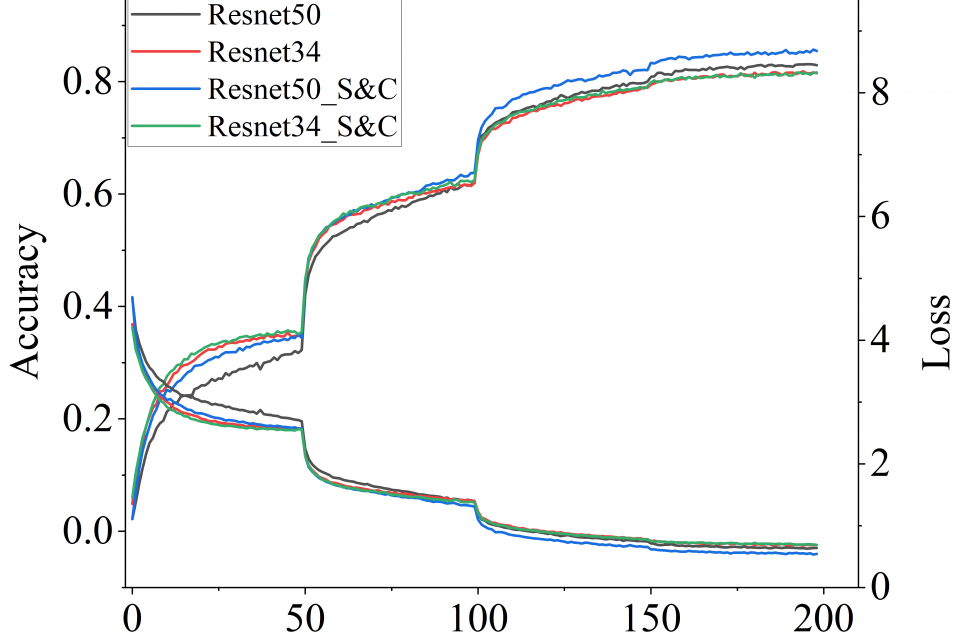Datasets
Standard Dataset
Datasets of Spatial and Channel Two-step Processing Lightweight Modules
- Citation Author(s):
- Submitted by:
- shaohui pan
- Last updated:
- Wed, 10/23/2024 - 00:17
- DOI:
- 10.21227/9562-jk23
- License:
 67 Views
67 Views- Categories:
- Keywords:
Abstract
This figure shows the accuracy and loss curves generated during the training process. We trained different neural networks on the CIFAR-100 dataset. For each network, the same training strategy was applied to every image in the dataset. The blue curve represents the accuracy after replacing the convolution layers, which achieves a higher accuracy compared to other networks.In the figure, the green curve represents the network after replacing standard convolution with the SCT module. We can see that the red and green curves converge towards the end. Therefore, we can conclude that after replacing the convolution layers, the SCT module either improves the network's accuracy or has little to no negative impact on it.
The CIFAR-100 and Tiny-ImageNet datasets are widely used for various types of networks. For the designed module, we validate its effectiveness using these two widely recognized datasets: CIFAR-100 and Tiny-ImageNet.
CIFAR - 100 data set download link is: http://www.cs.toronto.edu/~kriz/cifar.html
Tiny ImageNet Challenge is the default course project at Stanford CS231N. It operates similarly to the ImageNet Challenge (ILSVRC). The goal of the challenge is for users to solve an image classification problem as best as possible. In the same way, the Tiny ImageNet download link is: http://cs231n.stanford.edu/tiny-imagenet-200.zip
The CIFAR100 dataset has 100 classes. Each class has 600 color images of size 32 × 32, of which 500 are used as the training set and 100 as the test set. Tiny Imagenet has 200 classes. Each class has 500 training images, 50 validation images, and 50 test images.






